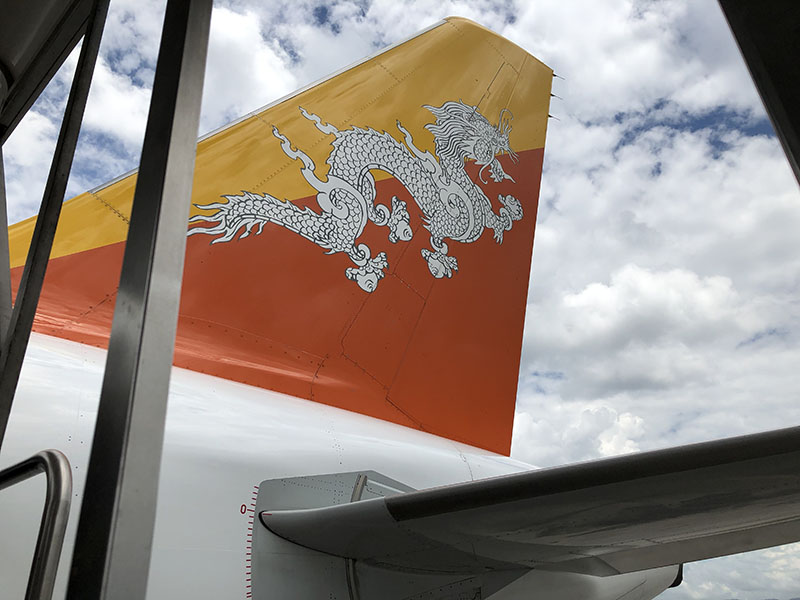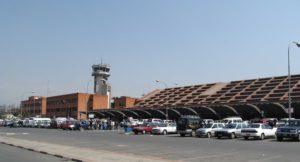
Visiting Bhutan usually requires an overnight halt in one of the transit cities and Kathmandu is a very convenient location if you are able to find a cheap flight from your originating city to Kathmandu or you want to visit Kathmandu as part of your trip. The airfare between Kathmandu and Paro is cheap (at around $450 per person) and the flight is just 45 minutes taking you just south of the Eastern Himalayan Ridge including Mount Everest.
Although the guide was written for people on transit in Kathmandu, the process described includes both entry and exit, so it applies to anybody flying into and out of Nepal except that you probably won’t be looking for the 1-day transit visa.
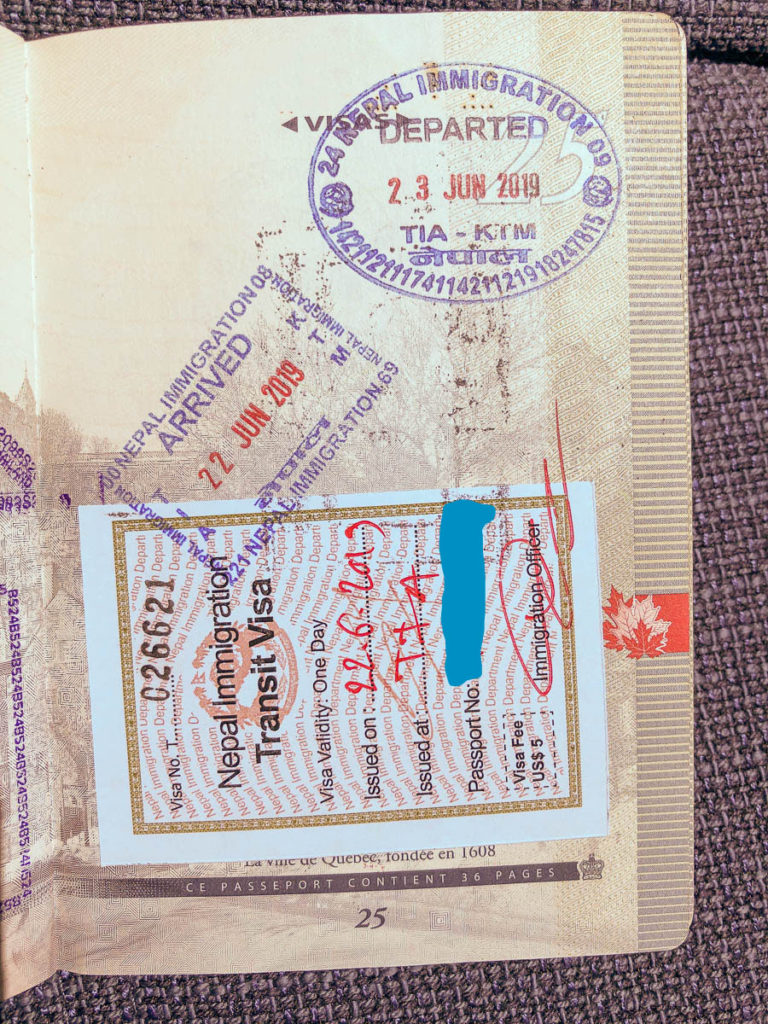
Why Transit Here?
Kathmandu city is a little less hectic than its neighboring capital city of Delhi but the airport has its challenges. For a large number of years, the Kathmandu International Airport was ranked one of the 10 worst airports in the world. Things have been improving but the airport can be a bit of a challenge; there is no way that you would want to book a flight through Kathmandu just because to experience the airport!
If the airport is this terrible why am I even talking about it? I use this airport at least one time per year either going to Bhutan or leaving Bhutan. The reason comes down to simple economics. For me, the flights reaching Bhutan via Kathmandu is half of the cost of reaching Bhutan via Bangkok. The flights are short, the visa is simple to get, the hotels are reasonably cheap and the food/beer is good.
This article was written after our trip in June 2019. Some of the pictures are new, some are from previous trips and others are some stock photos that I found. Unfortunately, most immigration halls don’t allow for photography so I tried to be a bit discrete so you won’t find as many pictures as I would like.
Visa
The information listed in this guide is not official and could be subject to change at any time by the Nepal government. Please see the following link for any updates. http://www.nepalimmigration.gov.np/page/arrival-departure-information-1.
You have the option of getting a visa in advance from your local Nepal embassy, but it seems that many people are getting their visas on arrival. If you are able to easily reach a Nepal embassy abroad, it can certainly make your life easier at the airport. If you live in a place where there is no embassy, the embassy is too chaotic, or the embassy is far enough away that you can’t visit in person then I would go the “on-arrival” route.
To get the visa on arrival, you need to fill out an application form and pay the fees. I am still seeing people handing in paper forms completed by hand, so I guess they are permitted but I haven’t used a paper form in about 5 years when the Nepal government started pushing electronic versions of the form and installed kiosks in the airport. You can fill out the form online at this address: https://online.nepalimmigration.gov.np/
The form is to be filled out no more than 15 days in advance. You receive an email receipt that you need to carry with you to the airport. The payment is still done at the airport, but this way allows you to skip step 1 of the visa process. This is the approach that I would recommend following.
The alternative to filling out the form online is to use one of the electronic kiosks at the arrival hall. Having just transited through this airport, I regret not going the on-line route. I’ve never gotten the passport scanner to actually recognized my passport, so I have to go through the process of typing everything by hand for everybody travelling with me. I’m pretty quick at typing on these kiosks by now so I managed to get 3 passports entered in about 5 minutes but the person beside me took at least 5 minutes to get just the one passport entered.
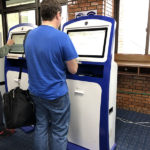
I was lucky to have reached a kiosk that was empty. By the time I had the 3 passports entered, there was a substantial queue behind me so if you land and have 5 people in front of you, you could be in for a long wait. I’ve ended up in these long queues and the best thing to do is to move to the front and help people fill things out.
The Arrival
You can tell that you are reaching Kathmandu on the plane because the ride starts to become bumpy (its because of the turbulence from the mountains, not some joke about the condition of the roads in Kathmandu) and you start to see mountains appearing as you look out through your window. If you are landing during the day time, you will get a good chance to notice how wide the Kathmandu valley is. You may wonder how close to the mountains you are flying but compare this to the very narrow Paro valley in Bhutan and you will quickly realize why only two airlines are allowed to operate in this Bhutan.
There are no jetways in Kathmandu and this means you will be transported from the aircraft to the terminal by bus. There are some new busses and some old busses and it is rather random which bus you’ll end up on. The drive is only between 30 seconds and 5 minutes which is good because the AC on the bus will usually not be working (or perhaps they just don’t have it in the first place).
Reaching the “Arrivals” gate you enter and walk down a long corridor and enter the arrival hall. The corridor has been altered and now reaches the immigration hall with the visa payment area to the left, the kiosks to the right, and the immigration counters straight ahead.
Remember to dress appropriately for the arrival hall. There is no AC in this hall and if this room is filled with a lot of people, you will feel the heat.
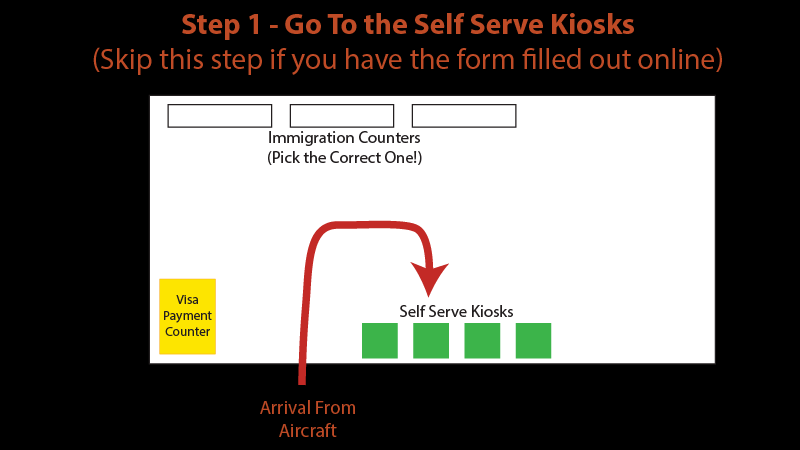
If you happen to have a visa already then you can go to the counter marked “Foreigner with Visa” and you will be through the process in record time. If you happen to be returning to Kathmandu for a second time (for example Kathmandu-Paro-Kathmandu) and you selected a normal tourist visa you can proceed straight through immigration.
If you have not filled out the form, go to the kiosk then the payment counter. If you have prefilled the form, go to the payment counter directly.
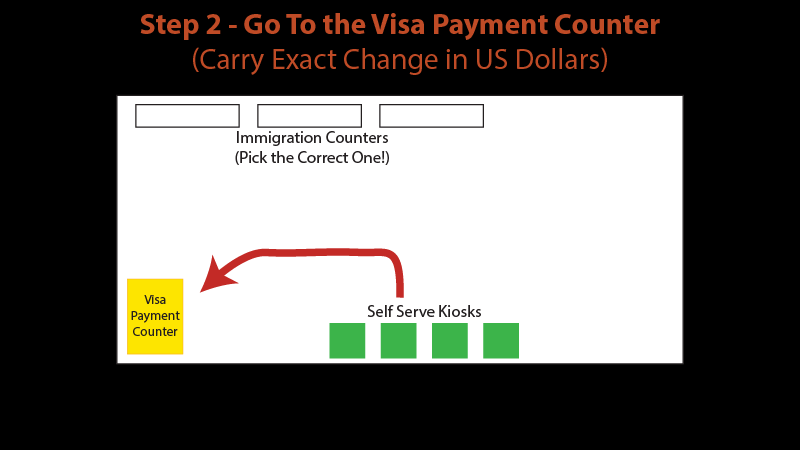
Payment for visas need to be paid in cash and in USD. There is a sign above the payment counter suggesting you can pay for visa services with a credit card subject to a 1.5% bank charge. The sign also lists a variety of currencies that are possible to use for the visa. I wouldn’t bother at this payment location with anything other than good old US dollars. I saw passengers being sent away saying that credit cards were not possible and its hard to know what type of exchange rate you are likely to get if you decide to try and use Canadian or Australian dollars here.
I would also highly recommend that you bring exact change for the visas that you will be getting. I have been stuck at the payment line for an extra 10 minutes waiting for people to buy their visas so that they payment desk has the correct change to give back.
Usually when I ask for a 1-day transit visa, they will ask to see the onward ticket. They are also likely to ask you why you are not staying longer.
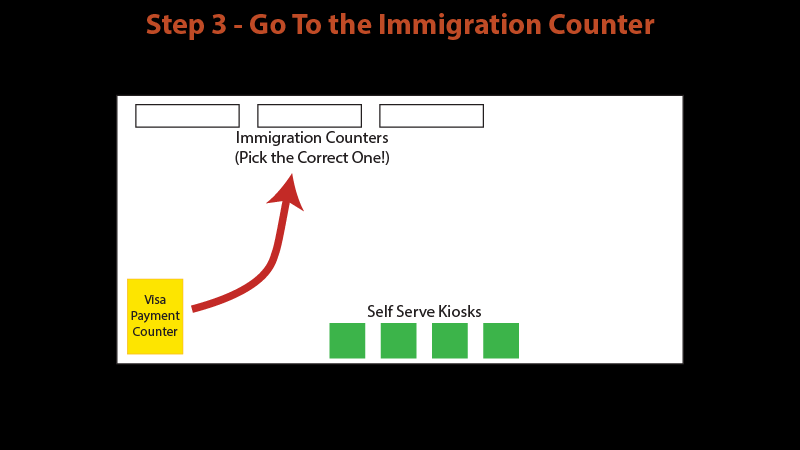
After the payment is made, you will be given a receipt and you can head to the visa issuing counters. The counters are clearly marked and you will need to go to the counter that matches the duration of your trip. The stickers they use are only available at those specific counters. If you are transiting, you are in luck because the 90-day/1-day visa counter is always the shortest and half of the time, the people in front of you are in the wrong line looking for the 15-/30- day visas.
I usually ask the immigration person to stick the visa into my passport sideways at the top or the bottom of the page so that room is still available on the same page for other stamps. In this particular trip, the sticker got put in neatly but the stamp and the exit stamp ended up consuming the rest of the page; maybe I’ll be able to convince the immigration officer in India next month to use the upper left corner of this page rather than stamping a new page.
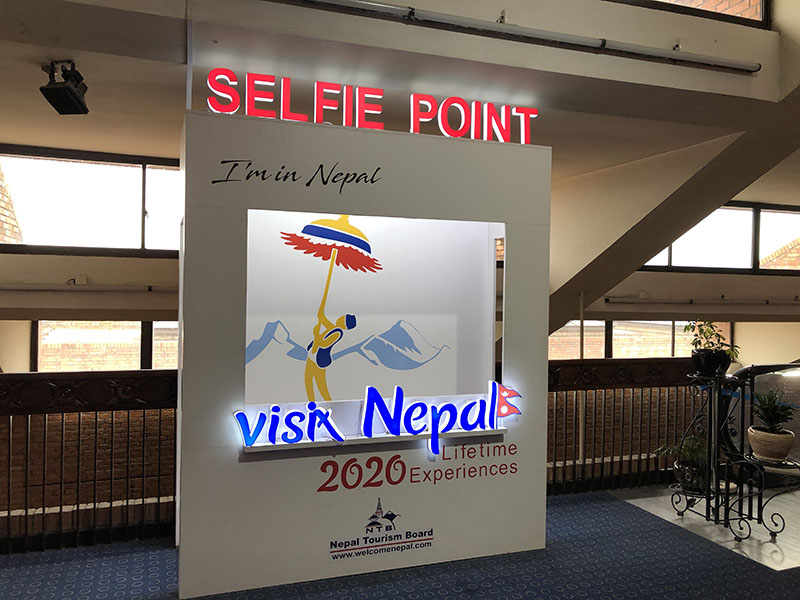
With your stamped passport in hand, head down to the baggage claim area. There is a fairly new metal detector and x-ray machine. In the past they just made you put your bag through the machine and ignored the beeps but it seems that they are becoming more insistent this year (we think they are looking very carefully for gold smuggling).
In the baggage area, there will a bunch of people there to “help” you with your bags and a trolley. Chances are then you probably don’t need their help but they will certainly insist. When we travel, we are often carrying a lot of bags and even this trip we had two full trolleys and we accepted the help (we handed the guy 200 NPR for this).
There is usually a person checking the baggage as you leave the area and they will insist on matching each baggage tag against the small stub that you were given when you checked in. If you have lost the stub be prepared to spend some time, there and make sure to have a copy of the ticket and they will verify the bag against the name. I know that this sounds rather painful, but I think it’s a reasonable practice and wish that it was possible at all airports to implement this. We actually had an incident a few years back where a guest picked up the wrong backpack in Delhi and brought it to Bhutan before discovering that it wasn’t actually their bag.
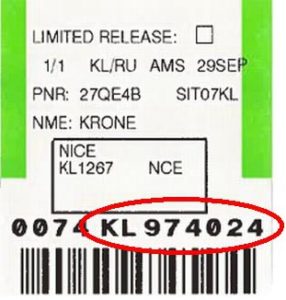
There is a large x-ray machine on the way out but most foreigners carrying backpacks or regular suitcases will be waved around. If you are carrying a cardboard box…well that will probably end up being run through the machine.
Finally you have found the exit but don’t rush too quickly, there are two things yet to be done. On the left hand side of the exit corridor, there is an exchange counter. Like any other airport in the world, the rate is not the best, but you will need some local currency to pay for the prepaid taxi… about $20 or $30 is good to change here and change the rest in Thamel or wherever you are staying.
Walk a little bit further and you will find the prepaid taxi counter on the right. Unless you have arranged with your hotel to pick you up, head for the prepaid taxi counter and tell them the hotel that you are staying in and they will tell you the price; you can verify the price on the board behind them.
There has been a change in Thamel this year and it seems that cars are no longer allowed to drive in Thamel. For my trip to the Kathmandu Guest House, the taxi said that I could be dropped with a 30 minute walk or I could pay 100 rupees extra to be dropped at the back gate of the hotel.
We are always on the fence about asking the hotel to come pick you up vs taking a prepaid taxi. When we have tried to arrange the taxi and we manage to get through the airport quickly then it works okay. However, if you end up getting delayed because of a lost bag or some other issue, the hotel cars might give up and leave.
Here is what I recommend about using the hotel transportation. If the hotel charges anything for the pick-up, don’t bother, just keep your life simple and get the prepaid taxi at the airport when you are ready. If you are using a free pickup, keep the phone number for the hotel handy. If you run into problems and you have ended up with a delay (say 60 minutes after your flight has landed) use your phone or ask (and offer some money) to somebody in the airport to call the hotel and let them know the situation so that they don’t leave assuming that you missed your flight.
Departing Kathmandu Airport
The drive from Thamel to the airport usually takes about 30 minutes. While I don’t enjoy sitting around airports any longer than I have to, I always make it a point to reach the Kathmandu airport a full 3 hours before the departure. It once took me 4 hours to get from the front door to my seat on airplane. The four hours were spent standing in a lot of very long queues.
Before you leave your hotel, look around and see if the hotel has left an extra roll of toilet paper and grab it. The toilets in the Kathmandu airport are some of the nastiest toilets that we have ever encountered on our travels. There is a high probability that there will be no toilet paper in the stalls and an equally high chance that there will not even be a toilet seat.
Over the past 4 years, the toilets have improved in appearance, but I think the smells have been permeated the walls and they don’t smell any better than the first trip that I made in 2010. Looking around in the stalls, the toilets this time all had seats and it looked like the toilet paper was stocked.
Your first task after being dropped by your transportation is to get inside the actual terminal. The security guard will not let you pass unless you have a copy of your ticket. You may think that you don’t need a copy of your electronic ticket to go somewhere but this is one place that you need the paper. I saw somebody one time get passed by rambling off some set of numbers claiming this was the ticket number, but it will be just easier to have a copy on hand.
Once the guard has verified your ticket and your passport, you can proceed into the x-ray machine where all of your bags will be sent through and you will get your first physical security check of the day.
Having screened, all of your bags you can look to find the airline counter. There are two sections and not much space to sit. Check each of the sections for the airline (usually the airlines to Bhutan are in section A).

You will need to show your visa clearance letter to the airline staff and of course if you are going to Bhutan you will want to make sure that you are on the left side of the aircraft so that you can see the mountains on the way to Bhutan.
Do you have any Nepali Rupees that you want to change out to another currency? Change them now at the counter near the door, there is no place upstairs to change your money.
After getting the board pass, head upstairs, fill out your departure card (you will need to bring your own pen for this purpose), and pass through immigration and go hang out in the departure area.
If you have spent the money for business class, then take the steps upstairs to the business class lounge where there is air conditioning and some comfortable places to sit.
The main area has improved quite a bit and looks much better than it did even a year ago. The toilets still smell terrible but the main part of the departure hall here is reasonable. There are a few shops selling food here and there is a restaurant. The WiFi in the airport was very impressive this time.
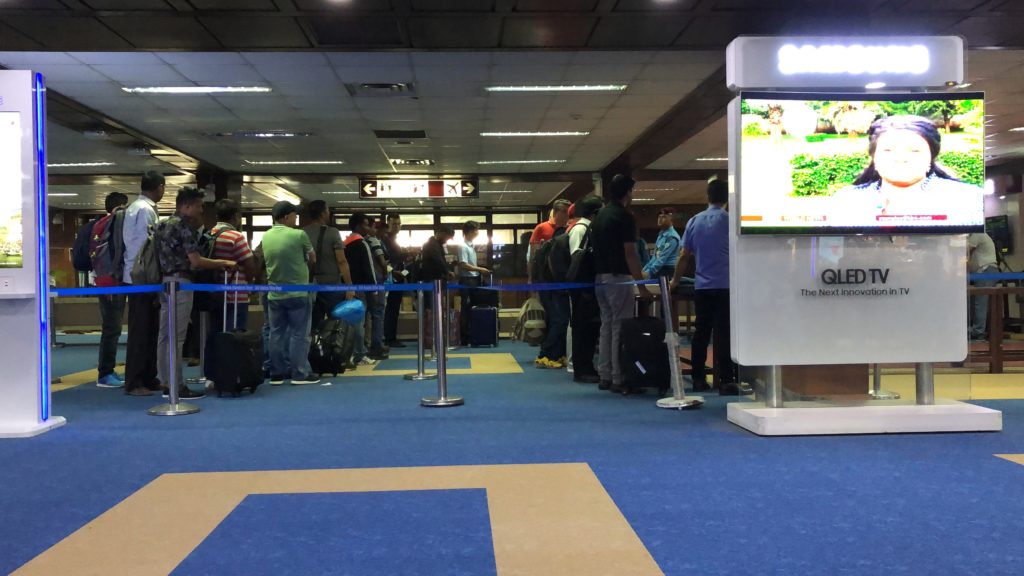
When you have about 1 hour remaining to your boarding time, you will need to go through the security check. The security check in this area is segregated to male and female so you may need to separate from your travelling group for a short while. The female line usually has nobody in it and the male line is usually packed. This time they didn’t insist on removing shoes but after the metal detector, you can expect another physical pat-down. After the screening you will get your boarding pass stamped and this will be checked by yet another person before going to the gate area.
The gate area has limited services and they insist on not telling you which gate you will use until the very last second so just keep checking the monitors and listening for announcements. There are a couple of places where you can get some food and there are some more terrible toilets to use if you have to.
When your flight is finally called, you can expect another pat down and a drive out to the plane on the bus. Some airlines let you walk to the plane but then go through a security pat down at the bottom of the steps.
Congratulations, you have successfully transited Kathmandu and you are now on your way to Bhutan.
